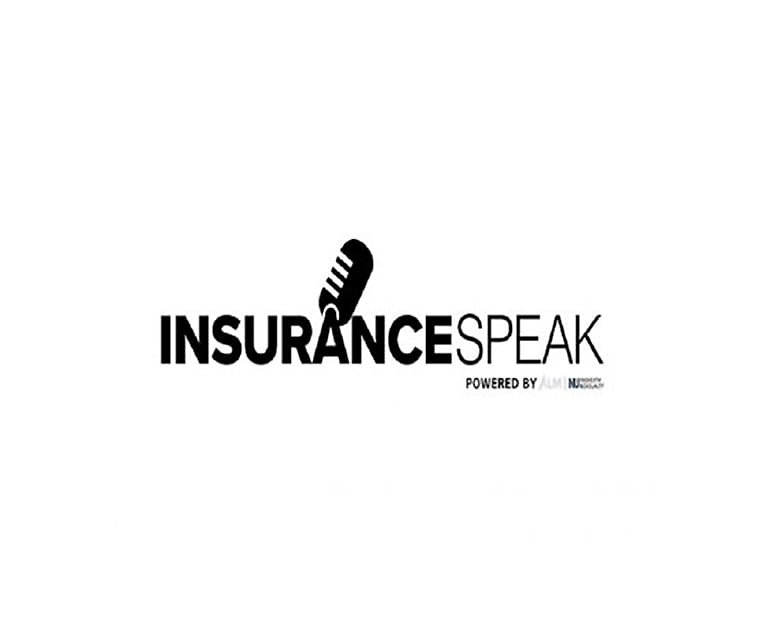There's a palpable sense of optimism among practitioners in theConstruction insurance space who see this current bull marketcontinuing and even growing. The private construction industry, inparticular, has been in an upward trajectory over the past fiveyears — providing a great deal of opportunity to insurers.
|“The construction market is booming, with total project valuesapproaching the high-water mark set in 2007 shortly before thefinancial crisis,” says Rob Brewer, vice president of industrysolutions at The Hanover Insurance Group. From an insuranceperspective, he adds, “there is ample capacity to take onwell-managed risk.”
|Brewer adds a cautionary note, however. A shortage of skilledlabor and experienced management, combined with the stresses ofworking to meet the shifting needs of the construction economy,will continue to have an impact on losses. Whether it's residentialbuildings, commercial and institutional structures, or improvinginfrastructure, “underwriters need to be aware of the past,watching for signs that their customers may be taking on more workthan they can effectively manage,” he notes.
|Related: The critical steps to winning new constructionclients
|Gary Kaplan, leader of XL Catlin's North America constructionunit, says the carrier enjoys a high renewal rate. “We find that most constructioncompanies are looking for carriers that will meet their needs andbe their long-term partners,” he adds.
|“It's highly competitive, regardless of region of the countryand segment of the construction industry you're dealing with,” saysAndrew Murray, chief underwriting officer for Starr Companies'construction unit. Renewal rates, he says, are generally flat tolow single-digit reductions for accounts with acceptable losshistory. Early renewal targets and commitments have become moreprevalent over the past year, he adds, “making new business evenmore difficult to obtain.”
|Related: Technology revolutionizes constructionrisks
|While the market is generally stable, Murray adds, “there appearto be outliers on almost every third- and fourth-quarter deal wesee, where the rest of the market will be within 5% of each otherbut then there will be one that is 20% lower or more.” 
Distracted drivers talking or texting are a significantcause of loss for contractors. (Photo: Shutterstock)
|Avoiding the pitfalls
There are several key contributors to claims in the construction insurance space. Oneof the most significant is auto-related losses, notes Rick Keegan,president of construction at Travelers.
|“We see a significant amount of large losses in construction asthe result of auto accidents. Because many auto accidents alsoinvolve injuries to a contractor's employees, accidents are asignificant cause of workers' compensation claims for acontractor,” Keegan explains.
|One of the biggest causes, Kaplan points out, is distracteddrivers talking or texting on their phones. To reduce risk,companies can employ software that can, say, shut down aphone while a vehicle is moving. “We've been able to show throughloss history how much of an impact that can make in terms ofdecreasing losses,” he adds.
|Bodily injury claims are still the largest category of loss inconstruction, whether the injury is to an employee or possiblyanother contractor on the job, says Brewer. “Another significantexposure is property damage claims,” he notes. “These can triggercoverage under General Liability, either for premises andoperations or, in the case of construction defect, completedoperations.” He adds that there can also be significant defensecosts associated with liability claims, as construction claims canbe complicated and it can be difficult to establish financialresponsibility.
|“In New York, bodily injury claims alleging violations of theLabor Law drive significant general liability losses, with theaverage claim ulti-mately costing between $3 and $4 milliondollars,” Murray points out. “Construction defect is always aconcern, and is especially so in particular classes of constructionand geographies.”
|One of the most significant contributors to claims is increased risk for on-the-job injuries as aresult of shifting employee demographics, says Keegan. He has seena clear increase in construction workplace injuries and workers'compensation claims due to inexperienced workers.
|Related: Builders risk insurance
|“The changing workforce and need for skilled construction laboris a top concern we continually hear about from our customers,”Keegan says. “The issue for contractors is twofold: There is ashortage of skilled labor, requiring contractors to sometimes hireworkers who don't have as much experience, while at the same timethere is an aging construction workforce. The combinationsubstantially changes the risk profile for a contractor.”
|
The issues contractors are dealing with include an agingworkforce and a lack of skilled labor. (Photo:Shutterstock)
|The most obvious impact, Keegan continues, is an uptick in job-site accidents resulting inemployee injuries. “Our statistics show that more than 50% of allconstruction workplace injuries occur within the first year ofemployment,” he notes. “We see in those cases that workerinexperience and unfamiliarity with construction site hazards leadto a significant increase in accidents, as contractors try toacclimate new workers to the industry and to the unique risks thatexist on a construction job site.”
|Related: 10 steps to mitigating drone risks on constructionsites
|Industry data also show that more construction workers areworking longer before retirement. An aging workforce presentsadditional challenges to contractors. “It often is more difficultto rehabilitate older employees post-injury, and they may be lesslikely to return to work. The result can be extended disabilityperiods, increased medical costs, and added pressure on acontractor's workers' compensation costs,” Keegan adds.
|“The shortage of skilled labor and experienced project managersmay cause the cost-to-build to rise, delivery to slow and job sitesto become harder to control and to run safely,” Brewer cautions.“With the rebounding economy, the commercial construction market isgrowing, which requires higher skill than many residentialprojects. Enhanced onboarding and skill development programs willbe critical for contractors, as well as identifying ways to keeptheir more experienced workers.”
|With the immediate need for rebuilding the damage caused byrecent hurricanes in Puerto Rico, Texas and Florida, there is aspike in demand for labor to get people where they need to be.“Many companies will be adding new people on the fly as demandsurges, and they need to make sure they get it right,” saysKaplan.
|Best practices include conducting pre-hire medical exams to makesure new people are physically capable of doing the job; creatingan in-house “mini-university” that teaches all the necessary safework practices (using personal protective equipment or fallprotection, for example); holding a two-week orientation period fornew hires; and having experienced employees mentor new workers.
|
Contractors often face the risk of accidentally strikingburied pipes that were undisclosed. (Photo: Shutterstock)
|Environmental exposures galore
Obtaining sufficient coverage for environmental exposures is critical but can bedifficult, because every piece of property is unique. On the otherhand, most projects do have several factors in common.
|Related: Working with environmental consultants: What riskmanagers need to know
|“Construction sites are different, but they all have exposure toair and surface water or soil and ground-water,” says Keegan.Frequent exposures include contaminated runoff from constructionsites, accidental striking of an underground pipeline or tank,exacerbation of current conditions at a site, and mold resultingfrom water intrusion.
|As a result of increased awareness around construction-relatedenvironmental risks, more construction contractors now includea requirement to maintain pollution liability coverage for jobs,Keegan adds.
|The key is understanding the building site, Kaplan says. Is it agreenfield (never developed) site or a brownfield (formerlydeveloped and possibly contaminated) site? Knowing what'sunderground is really important to calculating risk. For example,there may be underground storage tanks that hold hazardouschemicals that must be removed and disposed of properly.
|Related: 10 Steps to mitigating drone risks onconstruction
|There must always be a thorough pre-construction review, saysMurray. “The primary exposure on major new projects is thecondition of the site pre-construction. With this exposure being sosignificant, virtually no project is going to be able to obtainfinancing without having had full environmental due diligenceconducted — including, at the least, a full Phase I study.”
|The Phase I results, as well as any Phase II remedial efforts,ongoing monitoring requirements, and ability or lack thereof toobtain EPA or other governing body notices of release, drive theextent to which specific coverage is warranted — including neededterms and conditions as well as advisory limits.
|Regardless of the labor marketplace, type of project, andparticular environmental risks they're dealing with at the moment,contractors must constantly ask how they can reduce exposures. It'sa process of continuous safety improvement.
|“One of the questions I am asked most frequently by contractorsis how they can make themselves a 'better risk,'” Keegan says.Having a robust safety culture, he adds, is essential for anycontractor that wants to be successful in the long term. And thatbegins at the top.
|“The culture needs to start at the senior levels and always beon display, backed by a system of accountability and reward that isconsistently applied,” Keegan stresses. “It should be an integralpart of every hiring decision, to help ensure that workers have apersonal commitment to protecting themselves, their co-workers andthe company's reputation. The best contractors are never satisfiedand are constantly analyzing their internal controls, operationsand decisions to ensure they are always improving.” 
Contractors appreciate agents and brokers who “speak theirlanguage” and understand their concerns. (Photo:Shutterstock)
|Differentiation in a crowded market
In this complex construction insurance market, how cana carrier or brokerage differentiate itself to clients? It's allabout understanding the needs, demonstrating expertise, andbuilding solid, long-term relationships.
|“When I think about the qualities of the most effectiveconstruction insurance specialists, I think of someone who ishighly technical, has a passion for the industry, continues todevelop his or her expertise to keep pace with a rapidly evolvingindustry, is solution-oriented, and invests the time to buildlong-term relationships. It's someone who is committed to workingwith a contractor to best position them for long-term success,”Keegan says.
|“Contractors value technical expertise and prefer to work withinsurance professionals who understand their industry and candevelop solutions to help them manage risk,” he stresses. “Inaddition to technical expertise, construction is still arelationship-based business, so to be successful you have to bewilling to invest time in building trust and credibility.”
|Related: Expert: Beware Of Construction InsuranceScams
|For a broker, Keegan explains, this means taking the time tounderstand a contractor's history, philosophy, values and short-and long-term business objectives. For an insurance company, it'simportant to recognize the issues that might be affecting customersand offer risk management advice and solutions to help make theirjobs safer.
|Solid listening skills are likewise critical. “What really makesa difference in this marketplace is someone who listens better,”Kaplan says. “We train our people to really listen, ask the rightquestions, respond to those, follow up and do what they'vecommitted to do. This builds a high level of trust.”
|“Transparency in the business relationship is key,” Murray adds.“Also, there are less-tangible things, including being consistentin the underwriting approach with respect to risk selection,pricing and coverage terms.” The foundation beneath all of these,however, is the carrier truly understanding the business of itsinsureds. “Each contractor is materially different, and takingthe time to really understand the drivers behind their individualoperations and conveying that understanding to them in meaningfulways really sets a carrier apart from others.”
|See also:
|Risk management and contracting after HurricaneIrma
|Training the next generation ofconstruction and insurance professionals
Want to continue reading?
Become a Free PropertyCasualty360 Digital Reader
Your access to unlimited PropertyCasualty360 content isn’t changing.
Once you are an ALM digital member, you’ll receive:
- All PropertyCasualty360.com news coverage, best practices, and in-depth analysis.
- Educational webcasts, resources from industry leaders, and informative newsletters.
- Other award-winning websites including BenefitsPRO.com and ThinkAdvisor.com.
Already have an account? Sign In
© 2024 ALM Global, LLC, All Rights Reserved. Request academic re-use from www.copyright.com. All other uses, submit a request to [email protected]. For more information visit Asset & Logo Licensing.








